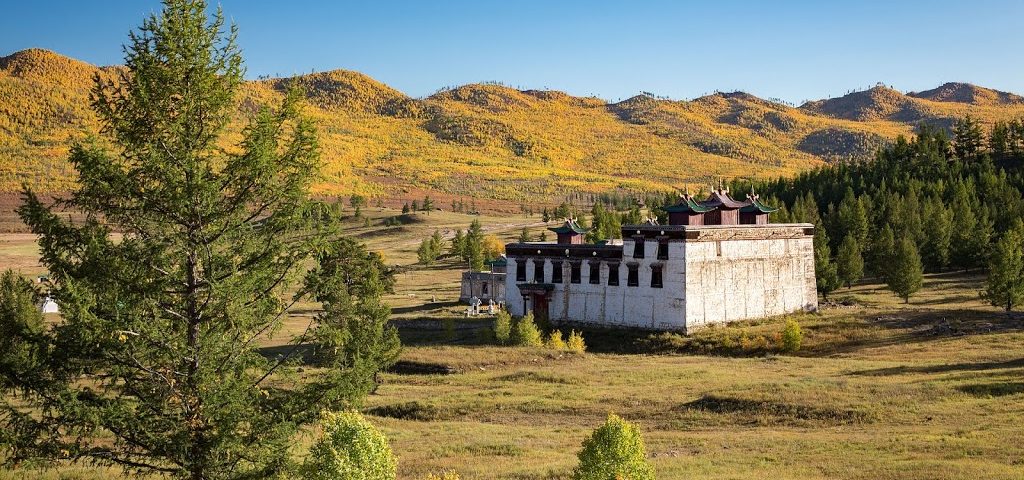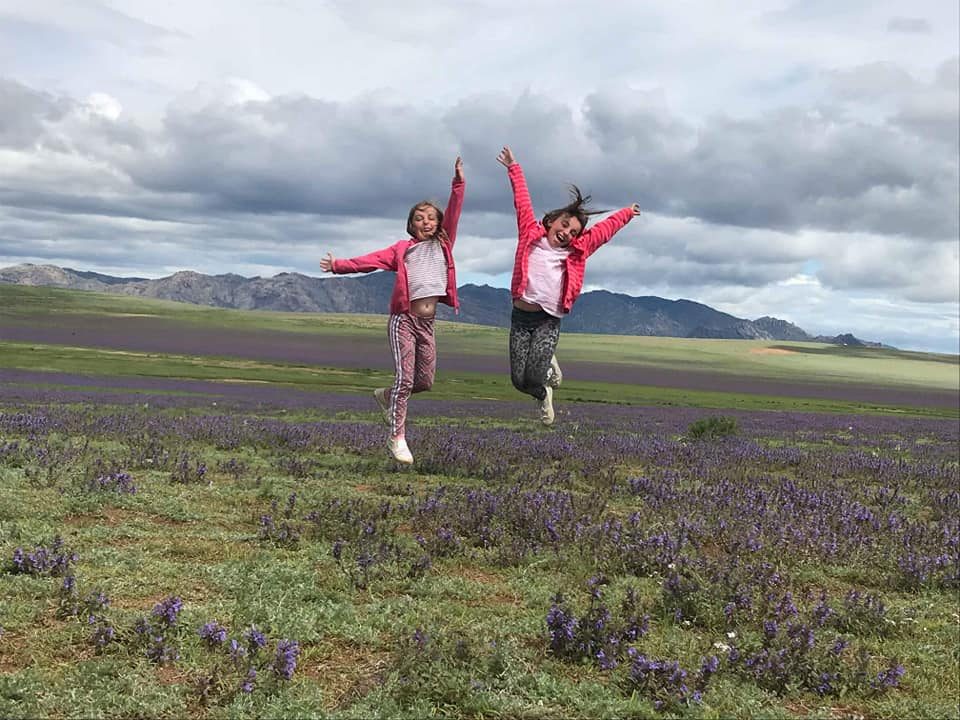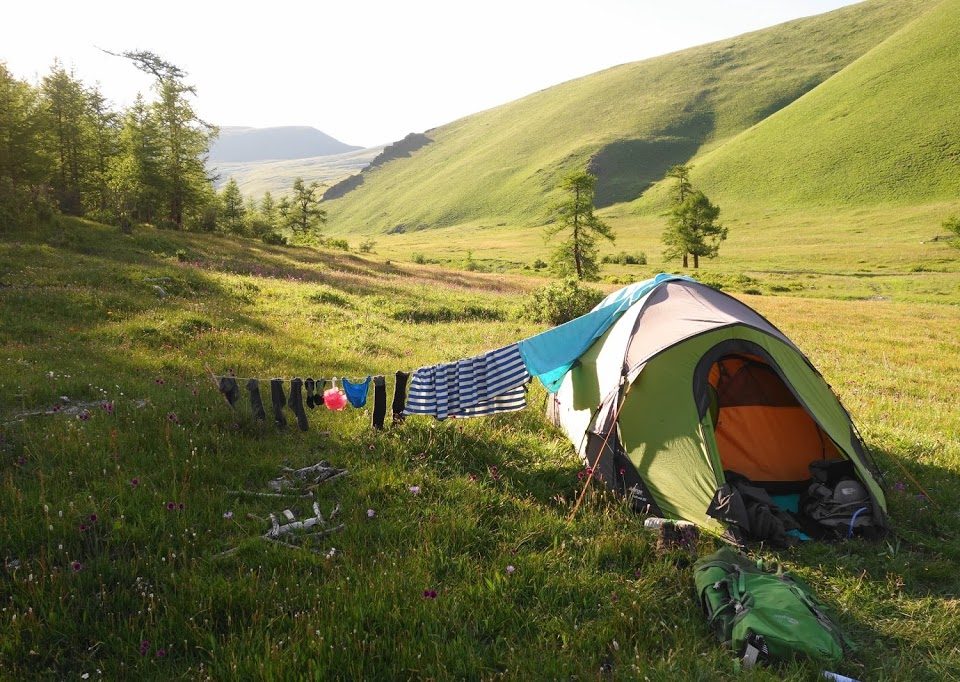Mongolia’s National Parks and Nature Reserves

Weather In Mongolia – Embrace The Rain
June 20, 2017
Winter Festivals In Mongolia
February 27, 2018Mongolia’s National Parks and Nature Reserves
Roughly 21% of Mongolia’s landmass has some form of national environmental protection (October 2022). And a further percentage has local protected area status. Every autumn we offer our National Parks and Nature Reserves Mongolia small group tour experience – designed to bring our guests into contact with some of the less-visited of Mongolia’s national parks and nature reserves in the country. The images used throughout this blog post were taken by our guest Séverine Baptiste-Blanchard and the vast landscapes of Mongolia’s middle Gobi and the mountain forest-steppe of Khentii provide the backdrop. Visiting two contrasting regions – the Gobi and Khentii – provides a better understanding of the diversity of the people and their way of life and the landscapes in Mongolia.
Although we all love spending time in nature, we need to strike a balance. It’s why our maximum group size is six and we only offer one departure per year as we don’t want to create a tourism circuit. It’s also why we sometimes alter or adapt the itinerary. We run the trip in the autumn as this has given the ground time to dry out from the wet summer months helping to reduce the physical impacts of four-wheel drive-related nature-based tourism such as bare ground exposure and erosion.
Ikh Nart Nature Reserve – Dorngobi Aimag
We start with a journey on the local Trans Mongolian train (depending on the schedule each year) – travelling from Mongolia’s capital city Ulaanbaatar (UB) through the steppe to desert terrain. As you trundle along (this is not an express route) you’ll start to get an understanding of the diversity of Mongolia’s natural habitats as the immense landscapes start to unfold before you. (If the train schedule doesn’t work out, then the drive down to Ikh Nart follows the line of the Trans-Mongolian train route so you still experience the same landscapes – just with a different mode of transport.)

Ikh Nart Nature Reserve is a wildlife region of rocky terrain and canyons that represents one of the last strongholds for the globally threatened Argali Sheep – the largest mountain sheep in the world (Ovis Ammon). It is also a breeding site for one of the world’s largest vultures, the Cinereous Vulture – also known as the European Black Vulture. Here we work with the protected area ranger and we always arrange an afternoon safari with him as long as his schedule permits.

Batbold – one of the protected area rangers of the Ikh Nart Nature Reserve. His local knowledge is as vast as the area he protects.
Ikh Gazriin Chuluu – Dundgobi Aimag
There is a granite belt that extends through Mongolia’s Middle Gobi characterised by extensive rock formations, caves and underwater springs that feed elm trees, mainly surrounded by steppe and semi-desert habitat. Ikh Gazriin Chuluu forms part of that granite belt and it characterised by extensive granite rock formations and surrounded by steppe and semi-desert habitat.
It also has local-level protection within Mongolia. (Whereas areas with national level protection are permanently safeguarded, local protected-area designations eventually expire, but they prevent mining leases on the land while valid. Today, many of these designations last for an average of 20 years – The Nature Conservancy.)The site is one of Mongolia’s 70 Important Bird Areas (designated by Bird Life Internationa) and provides a good stopover habitat for many nesting and migrating raptors including the Saker Falcon and the Lesser Kestrel.

Ikh Gazriin Chuluu means ‘Big Land Rock.’ Can you see how it got its name? These remarkable granite formations rise straight out of the middle Gobi steppe.
Erdenedalai – Dundgobi Aimag
Erdenedalai is Mongolian for ‘Jewel Ocean’ and although far from the ocean this small town located in the middle of the Gobi steppe provides a genuine insight into everyday life in Mongolia. It is also the hometown of a majority of the EL team and a very tight-knit and traditional community.
Although annual precipitation in this area is low, with no permanent lakes and very few springs, roughly 5880 herder households make their home in this transition zone between steppe and desert. Although it is not a protected area, staying here provides an insight into how the pasture and natural environment that herders rely on for their livestock are being impacted by climate change and how herders are adapting to the challenges they face brought on by the climate crisis.
Erdenedalai is a beautiful region little visited by other international visitors as it’s not considered a highlight by guidebook writers or tour companies. And that’s exactly why we make it one of our bases. It’s great for slow travel experiences of a more immersive kind.

Branding of horses is always an autumn task. It is very much a community event – when herders come together to help each other. And it always takes place on an auspicious date in the lunar calendar.

Gorkhi-Terelj National Park – Tuv Aimag
Yes, Gorkhi-Terelj is the closest national park to Ulaanbaatar and is very developed (some would say overdeveloped) for the tourist industry (the main valley was first developed for tourism in 1964) but it shares a common border with Khan Khentii and the two reserves are similar. Between the two sites, altitudinal variation is significant, leading to the development of different habitats but both support large areas of forest-steppe and mountain steppe, with alpine habitats on higher peaks.
The area is rich in rivers and streams, including the Terelj and Tuul and these water sources together with the rainfall in this mountainous region brings life to the pastureland – providing grazing for the livestock of the herding families who make this area their home. These herders include Naraa, Bujee (his wife) and their two children Tsindee and Bayasa – the family we work with in the region.

Naraa and Bujee are herders that move twice a year. They live close to the Terelj River – approximately 10km from the main developed area across the Tuul River in an area of gentle beauty. Staying at their accommodation provides a great insight into how herders are adapting – setting up micro businesses as a way of supplementing their income – https://www.eternal-landscapes.co.uk/modern-mongolian-nomads-meet-naraa-and-bujee/

Khentii Aimag
Named for the Khentii Mountains, a Strictly Protected Area that dominates the northwest of this province, Khentii Aimag hosts a number of cultural heritage sites demonstrating an evolving sacred cultural landscape. This includes Baldan Bereeven Khiid Monastery which would have been the centre of local life for a population whose faith and devotion more than made up for the simplicity and the challenging remote lifestyle. The monastery is surrounded by four mountains each said to resemble an animal: a lion on the east; a dragon on the south; a tiger on the west; and a Garuda on the north – each cardinal point is also guarded by a Protector Deity.
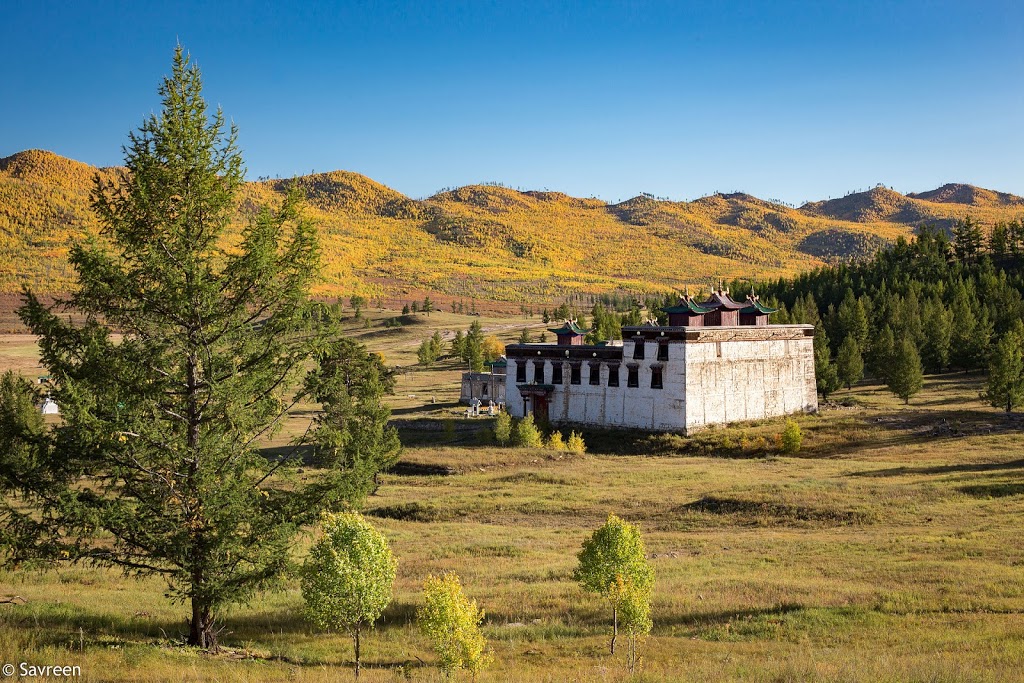
Regions of Khentii are also home to the Buriat ethnic minority. They traditionally live more in log houses and move around in the summers with a ger. They also harvest hay in preparation for winter and lead a more settled lifestyle than other Mongols. The communities at Batshireet, Binder, Dadal Bayan Uul, and Dashbalbar are mainly Buriat.
In Khentii Aimag you will also find the stunning Onon Balj National Park – the biodiversity of the national park is unique and rich due to its location situated at the juncture of two big ecosystems of central Asia, the Siberian taiga and Daurian/Manchurian dry steppe.
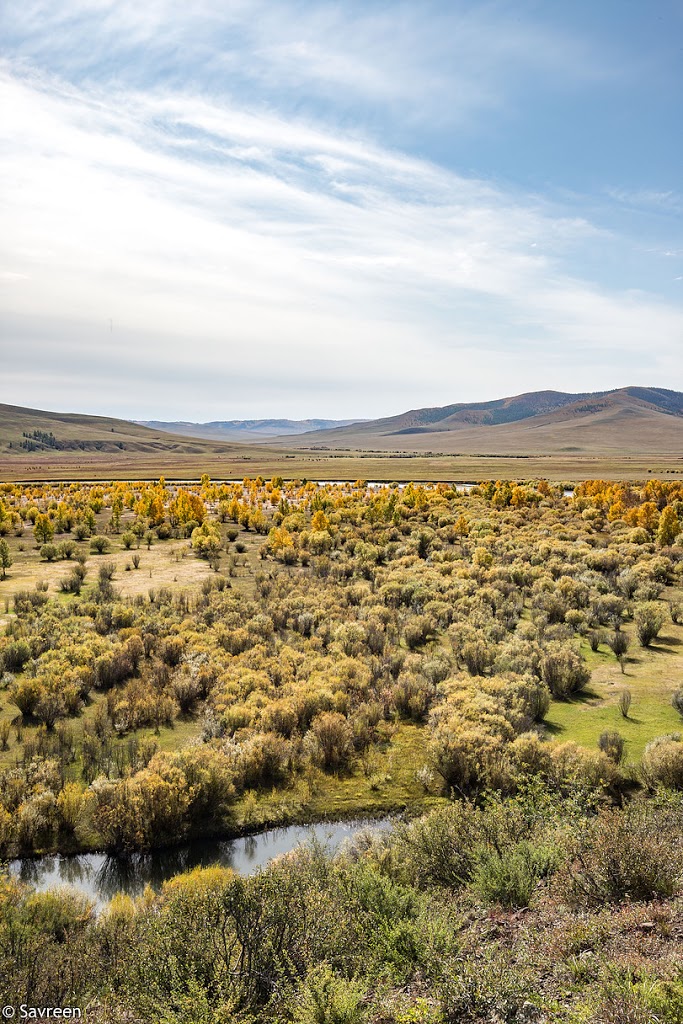
You also cross the mighty Onon River using the birvaz. The what? The birvaz is one of our favourite inventions – a floating platform on a pulley system that crosses the river – used by locals with their motorbikes or in this case, by EL with our Furgon van. Tserendorj is the operator and crossing the river this way gives you time to discuss the weather, the state of the Mongolian economy and to count fish.

And then there’s the delight of the community of Dadal considered by many as the birthplace of Chinggis Khan. Dadal is an attractive small community on the border of the Onon-Balj National Park. Chinggis Khan’s birthplace is believed to lie at the confluence of the Onon and Balj rivers at Delüün Boldog – 3km north of Bayan-Ovoo (the centre of Dadal district) in the Delüün Boldog hills. We don’t have a definite plan in Dadal as it’s just a lovely local community to spend a little time in with no set plans.
These are a few of the places we visit on our National Parks and Nature Reserves experience and if you’re interested then have a look here https://www.eternal-landscapes.co.uk/national-parks-and-nature-reserves-small-group-trip/ or at our Mongolia tours page. Alternatively, get in touch with any questions you may have.
Jess @ Eternal Landscapes


